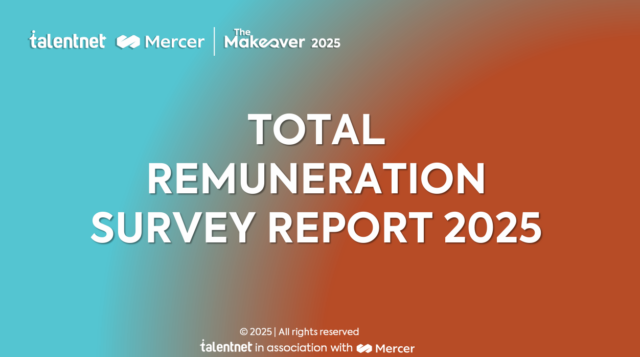4 Essential Reasons to Review Your Employee Benefits Program

May 8, 2025
Last updated on Jul 28, 2025
In Vietnam's rapidly evolving business landscape, are employee benefits really necessary for business success? The evidence confirms their essential role in talent retention, legal compliance, and cost efficiency. Companies that neglect benefits management risk falling behind in Vietnam's competitive market.

The Vietnamese labor market requires companies to regularly review your employee benefits to address rising salary expectations, regulatory updates, and shifting workforce preferences. A structured review process helps organizations maintain competitive advantage while managing costs and compliance obligations.
By examining market data, regulatory requirements, and operational efficiency metrics, companies can create benefits programs that serve both business objectives and workforce needs.
Market competitiveness and talent retention
Among key reasons to review your employee benefits, market competitiveness stands paramount. Vietnamese workers’ salary expectations continue to rise across sectors. The Ministry of Labor, Invalids and Social Affairs reports average monthly salaries reached 7.5 million VND in early 2024, marking a 7.4% increase from 2023. This upward trend affects benefits expectations proportionally.
The technology sector exemplifies this wage pressure, with monthly salaries averaging 18 million VND. Workers in this sector often receive enhanced benefits packages, setting new market standards for employee compensation.
Reeracoen Vietnam’s 2024 survey adds context to these figures. Most Vietnamese workers now expect annual pay increases above 10%, indicating strong competition for talent retention. Companies must adjust their total compensation strategies accordingly.
Strategic implication: Benefits packages require quarterly or semi-annual reviews to maintain market competitiveness. Organizations that delay reviews risk increased turnover costs and reduced ability to attract qualified candidates.

Legal compliance and risk management
Vietnam’s employee benefits regulations undergo frequent updates. The Labor Code 2019, effective since January 2021, established new baseline requirements for employee benefits and working conditions. Decree No. 46/2023/ND-CP, implemented in July 2023, brought additional changes to insurance market regulations.
Upcoming legislative changes demand attention:
- Social Insurance Law modifications take effect July 1, 2025
- Health Insurance Law amendments may alter contribution rates from January 1, 2025
- Both changes affect mandatory benefit calculations and employer obligations
Companies operating without regular compliance reviews face significant risks:
- Administrative penalties for non-compliance
- Retroactive payment requirements
- Potential legal disputes with employees
- Reputational damage in the labor market
Strategic implication: Monthly compliance checks help companies adapt to regulatory changes proactively. This systematic approach prevents costly violations and maintains positive relationships with regulatory authorities.
Cost optimization and financial efficiency
A thorough employee benefit review starts with understanding mandatory social security contributions. Employers must meet specific allocation requirements for Social Insurance, Health Insurance, and Unemployment Insurance as prescribed by current regulations.
- 17.5% of salary for Social Insurance
- 3% of salary for Health Insurance
- 1% of salary for Unemployment Insurance
Beyond mandatory contributions, companies can implement targeted cost-control measures through structured benefit reviews. Strategic bundling of insurance services has proven particularly effective, reducing administrative overhead while enabling volume-based discounts. Companies partnering with single providers for multiple coverage types typically report cost savings between 5-8%.
Preventive healthcare programs demonstrate another avenue for cost optimization. Manufacturing sector employers report significant returns on investment through reduced absenteeism rates and lower insurance claims after implementing annual health screenings. This proactive approach supports both financial efficiency and employee wellbeing.
Regular benefit utilization analysis reveals additional optimization opportunities. Companies can identify underutilized benefits for modification or replacement, while directing resources toward high-demand services. This analytical approach helps maintain value while controlling expenses through strategic cost-sharing arrangements.
Strategic implication: Quarterly financial reviews of benefit programs help balance cost management with employee satisfaction, supporting sustainable benefit offerings aligned with business objectives.

Employee engagement and productivity
WTW research reveals that employee satisfaction in Vietnamese workplaces stems primarily from three key factors. Health benefits rank as the top priority, with comprehensive medical coverage cited by 71% of surveyed workers. Career development opportunities significantly influence long-term retention decisions, while flexible work arrangements increasingly affect overall job satisfaction.
The impact of well-designed benefits programs extends beyond employee satisfaction. Manufacturing facilities offering enhanced benefits packages report significant improvements in operational metrics. These improvements manifest through increased productivity, reduced turnover rates, and decreased workplace incidents, demonstrating the connection between employee wellbeing and operational efficiency.
Regular benefit reviews serve multiple strategic purposes in supporting engagement and productivity. Organizations can effectively monitor utilization patterns and identify emerging preferences while measuring the impact of benefits on key performance indicators. This systematic approach enables companies to align offerings with demonstrated employee needs, support productivity through targeted benefit adjustments, and maintain competitive positioning in critical benefit categories.
Strategic implication: Periodic assessment of benefit impact on engagement metrics helps companies optimize their investments while supporting workforce productivity. This methodical approach ensures benefits continue to serve both employee needs and business objectives effectively.
Regular employee benefits review represents a critical business function rather than an optional administrative task. Organizations must approach benefits management as an ongoing strategic process that supports both operational efficiency and workforce stability through structured evaluation of market position, regulatory compliance, cost management, and employee engagement.
HR departments should integrate benefits review into their broader talent management strategy while seeking professional guidance for complex regulatory and market challenges. This systematic approach, supported by qualified HR consultants, ensures sustainable program development and maintains alignment with business objectives in Vietnam’s dynamic employment landscape.

Solve your HR problems!
6th Floor, Star Building, 33 Mac Dinh Chi, Saigon Ward, Ho Chi Minh city, Vietnam




